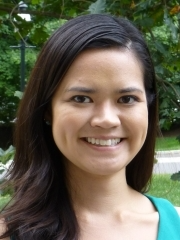
Pankaj Agarwal
Title: Flood Risk Analysis on Terrains
Abstract:
An important problem in terrain analysis is modeling how water flows across a terrain and creates floods by filling up depressions. This talk discusses a number of flood-risk related problems: Given a terrain T, represented as a triangulated xy-monotone surface, a rain distribution R, and a volume of rain V, determine which portions of T are flooded and how water flows across T. Efficient algorithms are presented for flood-risk analysis under both single-flow-direction (SFD) as well as multi-flow-directions (MFD) models — in the former, water at a point can flow along one downward slope edge while in the latter, it can flow along multiple downward slope edges; the latter more accurately represent flooding events but it is computational more challenging.
These algorithms are also extended to handle uncertainty in terrain data, which must be incorporated into the terrain analysis.
Brief Bio:
Prof. Agarwal earned his PhD in Computer Science from the Courant Institute of Mathematical Sciences at New York University. He joined Duke University in 1989 where he is currently the RJR Nabisco Professor of Computer Science and Mathematics. He served as the Chair of the Department of Computer Science 2004-10 and 2017-20. His research interests include geometric computing, spatial databases, ecological modeling, geographic information systems, sensor networks, computational molecular biology, and robotics. A Sloan Fellow, an ACM Fellow, and a National Young Investigator, Dr. Agarwal has authored four books and more than four hundred research articles. He serves or has served on the editorial boards of various journals and on the advisory boards of many institutes and centers.

Elisabetta Matsumoto
Title: Twisted Topological Tangles or: the Knot Theory of Knitting
Abstract:
Imagine a 1D curve, then use it to fill a 2D manifold that covers an arbitrary 3D object – this computationally intensive materials challenge has been realized in the ancient technology known as knitting. This process for making functional materials 2D materials from 1D portable cloth dates back to prehistory, with the oldest known examples dating from the 11th century CE. Knitted textiles are ubiquitous as they are easy and cheap to create, lightweight, portable, flexible and stretchy. As with many functional materials, the key to knitting’s extraordinary properties lies in its microstructure.
At the 1D level, knits are composed of an interlocking series of slip knots. At the most basic level there is only one manipulation that creates a knitted stitch – pulling a loop of yarn through another loop. However, there exist hundreds of books with thousands of patterns of stitches with seemingly unbounded complexity.
The topology of knitted stitches has a profound impact on the geometry and elasticity of the resulting fabric. This puts a new spin on additive manufacturing – not only can stitch pattern control the local and global geometry of a textile, but the creation process encodes mechanical properties within the material itself. Unlike standard additive manufacturing techniques, the innate properties of the yarn and the stitch microstructure has a direct effect on the global geometric and mechanical outcome of knitted fabrics.
Brief Bio:
Elisabetta Matsumoto is an assistant professor in the School of Physics at Georgia Institute of Technology. Her physics research centers around the relationship between geometry and material properties in soft systems, including liquid crystals, 3D printing and textiles. Her lab studies knitted textiles from the point of view of knot theory and as an additive manufacturing technique. She is also interested in using sewing, 3D printing and virtual reality in mathematical art and education.